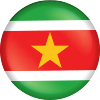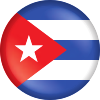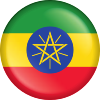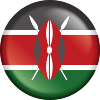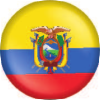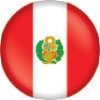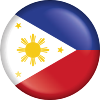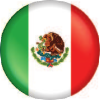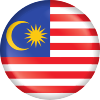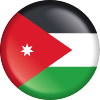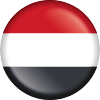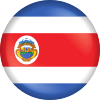Data providers to Genesys
Data providers to Genesys
Who shares data on Genesys?
Data provider pages aggregate passport data by the institute that provided it to Genesys. International, regional and national genebanks are the primary contributors of data to Genesys. Some of our partners aggregate and provide data to Genesys on behalf of several genebanks.
Contact helpdesk@genesys-pgr.org to become a data provider to Genesys!
The Agricultural Plant Genetic Resources Conservation and Research Centre (APGRC) is one of the Centres that operate under the umbrella of the Agricultural Research Corporation (ARC) Sudan. It is mandated for realizing sustainable management and use of the plant genetic resources for food and agriculture (PGRFA) in Sudan.
The Bioversity International Musa Germplasm Transit Centre (ITC) is home to the world’s largest collection of banana germplasm. Its mission is to contribute to the secure long-term conservation of the entire banana genepool and hold the collection in trust for the benefit of future generations under the auspices of the Food and Agriculture Organization of the UN. The conserved germplasm is placed in the Multilateral System of Access and Benefit Sharing of the International Treaty on Plant Genetic Resources for Food and Agriculture.
CIAT's genebank in Cali, Colombia, lists almost 68,000 accessions in Genesys. The vast majority are seed crops, mainly beans, but CIAT also has a mandate to conserve cassava and tropical forages, and those too are held in the genebank. Almost 2000 of the accessions are wild relatives. The CIAT bean collection is the world's largest and most diverse, with more than 44,000 accessions.
The European Search Catalogue for Plant Genetic Resources (EURISCO) provides information about more than 2 million accessions of crop plants and their wild relatives, preserved ex situ by over 400 institutes. It is based on a network of National Inventories of European member countries and represents an important effort for the preservation of world's agrobiological diversity by providing information about the large genetic diversity kept by the collaborating institutions.
The Genetic Resources Research Institute of the Kenya Agricultural and Livestock Research Organization is responsible for conserving plant, animal, aquatic and microbial genetic resources. Our mission is to harness, conserve and promote greater and sustainable use of genetic resources for increased food security, resilience of agricultural production systems as well as improved health and socio-economic.
Department of plant genetic resources (Departamento Nacional de Recursos Fitogenéticos, DENAREF) of INIAP Ecuador.
ICBA genebank focuses on germplasm of salt-tolerant crops with proven or potential salinity tolerance to provide a source of genetic diversity for researchers to mitigate problems of salinity in agricultural production systems.
The International Crops Research Institute for the Semi-Arid Tropics (ICRISAT) is an International organization which conducts agricultural research for rural development, headquartered in Patancheru with several regional centers and research stations. ICRISAT's mandate crops include: chickpea, pigeonpea, groundnut, sorghum, pearl millet and finger millet.
The International Livestock Research Institute (ILRI) works to improve food security and reduce poverty in developing countries through research for better and more sustainable use of livestock. ILRI is a CGIAR research centre – part of a global research partnership for a food-secure future.
The genebank at the International Potato Center (CIP) in Lima, Peru maintains clonal and seed collections of potato, sweetpotato, and Andean roots and tubers (ARTC’s). The genebank is maintained as a global public good under the International Treaty on Plant Genetic Resources for Food and Agriculture (ITPGRFA). CIP’s germplasm is available for requestors for research, education, and breeding purposes.
The Malaysian Agricultural Research and Development Institute (MARDI) generates and promotes new, appropriate and efficient technologies for the advancement of the Malaysian food industry, agro-based industries and agriculture. MARDI’s Genebank (MyGeneBankTM) in Serdang, Selangor and the National Rice Genebank in Seberang Perai, Pulau Pinang conserve together more than 16,000 plant accessions, where the main crop conserved is rice (about 13,020 accessions).
The Margot Forde Germplasm Centre is New Zealand's national gene-bank of grassland plants and also hosts the New Zealand Indigenous Flora Seed Bank.
Moroccan Genebank (MGB) INRA Settat
The National Genebank of Tunisia (NGBT) is an administrative institution under the authority of the Ministry of Local Affairs and Environment of Tunisia. NGBT started its activities in November 2007 with the mandate to coordinate and promote the conservation and sustainable use of plants, animals and micro-organisms. NGBT has a capacity for ex situ conservation of 200,000 seed accessions, 300,000 samples in cryopreservation at its headquarters in Tunis and a 20 hectares field genebank in Takelsa (Governorate of Nabeul, north-eastern Tunisia).
The National Plant Genetic Resources Centre of the Zambia Agriculture Research Institute (ZARI).
The National Plant Genetic Resources Laboratory (NPGRL) of the Institute of Plant Breeding (IPB), College of Agriculture and Food Science (CAFS), University of the Philippines Los Baños (UPLB) serves as the national repository of important and potentially useful agricultural crops including the wild and weedy relatives.
Seed Savers Exchange is a non-profit, membership organization with the mission of conserving agricultural biodiversity. Seed Savers Exchange maintains both seed and vegetative collections of fruit, vegetable, and flower cultivars with an emphasis on family heirlooms and historic commercial varieties with a history of use in the United States.
The Tropical Agricultural Research and Higher Education Center (CATIE), located in Turrialba (Costa Rica), is an international scientific organization with a unique combination of science, postgraduate education and innovation for development. CATIE promotes the development of climate-smart territories as a tool to achieve sustainable and inclusive human wellbeing in Latin America and the Caribbean, in partnership with countries and public and private partners through a solid regional scientific platform.


